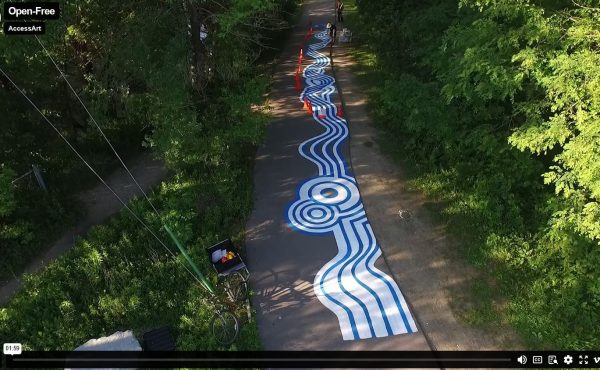At this year’s fourth annual Complete Streets Forum, Eva Ligeti, Executive Director of the Clean Air Partnership, emphasized that “the continued business as usual approach is not working”. Though she was referring to our conventional methods of street and transportation design, Ligeti’s comments were equally applicable to our approach to achieving complete streets.
The tenor of the conference proceedings was notably muted. The sting of the cancellation of the Cycling Advisory Committee and Transit City was palpable. A lack of progress on pedestrian and cyclist injuries and fatalities was also discouraging.
But too often in Toronto we accept our lot and place the successes of other cities on a pedestal. While there is much to be learned from international best practices and local mistakes, it may also be time to celebrate our own success.
Portland, OR is often held up as a bastion of active transportation. Yet, as Mia Birk, President of Alta Planning + Design, explained this was not always the case. We often forget about Portland’s long history of streetcar removal, poor air quality, and abundant surface parking. We rarely hear about the slow accumulation of citizen support for the return of light rail, parking lot to public space treatments and highway to waterfront park designs. These transformational acts, in concordance with favourable leadership, started a cultural shift that pulled council, business and local citizens into the movement.
There’s good work happening locally. The Ministry of Transportation is updating its Bicycle Policy, last dusted off the shelf in 1992. Councillor Minnan-Wong is advocating for a network of separated bike lanes downtown. Bixi launches this week. Metrolinx will be ramping up transit-integrated cycling infrastructure and linking its recent guidelines to funding. Toronto Public Health will create a walkability index to map and assess the health impacts of development scenarios. Transportation Services is trying to translate good policy into good design with improved specifications and performance measurements.
Can we learn from other cities? Absolutely.
Hillary Poole, Senior Project Manager, New York City Department of Transportation, spoke to her city’s approach to pedestrian safety improvements. By shortening crossing lengths, providing pedestrian refuges, calming traffic and extending crossing times, the city will seek to decrease fatalities by 50% from 2007 levels by 2030. “These initiatives improve conditions for all road users. Pedestrian crashes on streets with bike lanes are 40% less deadly than on those without,” said Poole.
In Montreal, Michel Labrecque has mixed a transportation cocktail that has been integral to his city’s success. The Chair of the STM’s Board of Directors is developing strong alliances between public transit, pedestrians, car sharing and car pooling through integration, promotion and information. The unique approach of integrating the OPUS card system with Bixi and car sharing companies is a practice we should steal.
This is great progress – further demonstration of the possibilities of complete streets that should serve as a boost and not a barrier to achieving similarly great things in Toronto.
“This is not a stealth operation, “ said Birk, “It’s a celebration. It’s not just about the stripes of the bike lane, it’s about the attitude. We need to tell people [about active transportation and complete streets] in ways that are meaningful to their lives.”
Minister of Transportation Kathleen Wynne encouraged participants “to come out of the closet” and share their cycling habits widely.
Roelof Wittink, Executive Director of Interface for Cycling Expertise, agreed, “[The conversation is about] vibrant green prosperous cities and what part cycling can play in that.”
There’s no doubt that there’s work to be done. But there’s also no reason why this work can’t be done in an inclusive and integrative manner. Indeed, it may only be possible if we do.
Councillor Minnan-Wong was at his most inspiring off text: “Many people look at me at think that I’m right of centre and from the suburbs so all I must do is love cars… This is not a left-wing or a right-wing issue, these are family and people issues. Everyone needs to be safe and healthy to make cities and communities better.”
Image from m-bike





2 comments
Goes against Rob Ford’s “streets are for cars” philosophy. Even though history has told us that that streets only became for cars after the 1920’s. Before the 1920’s, streets were for people.
This article, as well as Councillor Matlow’s war on the war on ball hockey, brought to mind something I’ve been thinking about for a while.
Noone wants heavy traffic on our local residential streets. Outside the core, they loop and dead end to discourage anyone who doesn’t live on them from cutting through. In the core, the orderly grid has likewise been transformed into a warren of one-way streets specifically to discourage through traffic.
The basic concept that these streets shouldn’t carry heavy traffic or vehicles moving above very low speeds is almost universally accepted.
So why are they still being treated as car spaces? The obvious extension of the current approach is that drivers be treated as guests in this space, rather than its owners. This existing relationship should be formally acknowledged.
i.e. New local residential streets should be built as woonerfs, and existing ones should be retrofitted. This would also be a cheap way (requiring no purchase of land by the City) to increase the anemic amount of public space we currently have. Build features that encourage slow and wary driving, while providing amenity for a street’s residents.
As local streets should only be a very small portion of a drivers’ total trip, and they’re already expected to drive slowly, this wouldn’t even add much of a time penalty for commuters.